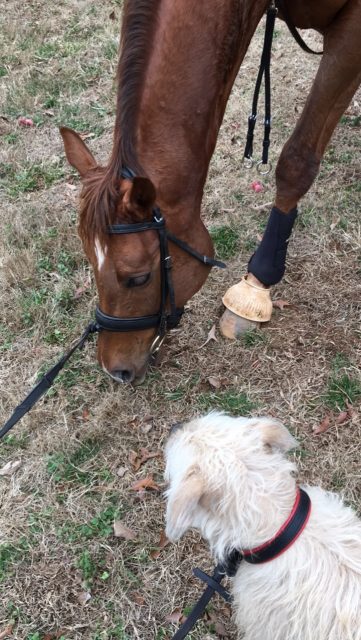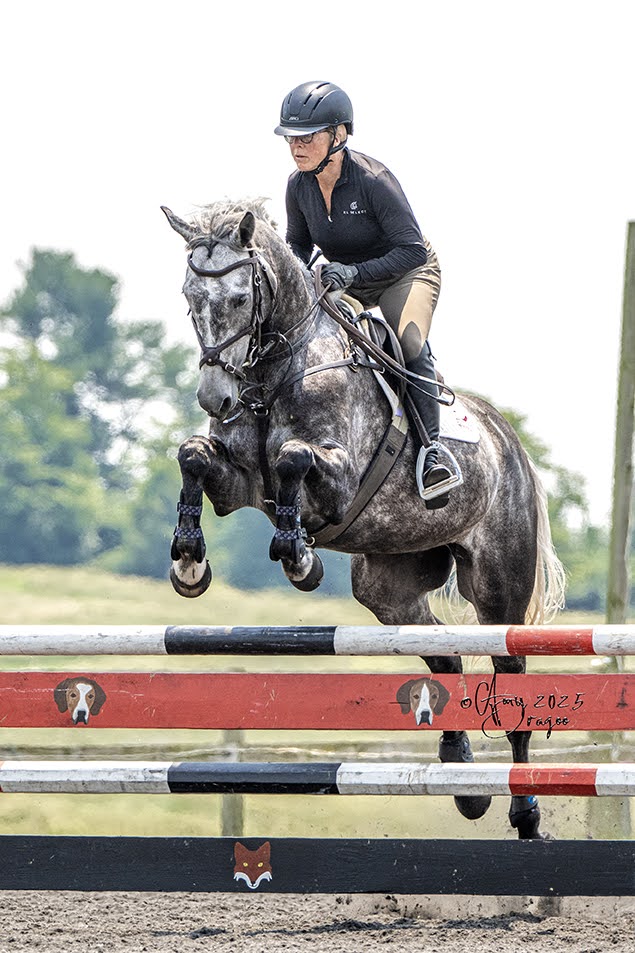
Paradise Farm. Photo courtesy of Meybohm Real Estate.
Paradise Farm, a staple eventing venue in Aiken, South Carolina, is on the market to be sold following owner Lellie Ward’s decision that she is ready to downsize after running the facility for more than two decades.
Lellie purchased the 110-acre farm in 1997 when she returned home to Aiken after a four-year period of training in England. “I had outgrown the little stable I was in, and a friend of mine showed me this property. Even though I had lived in Aiken all my life and grew up here, I never even knew the property existed,” she said.
“I first saw the property from the back gate, and the view of what is now the cross country field showed what I knew would be an amazing gallop. The field is about 80 acres and rolling hills, and it reminded me of Wylye, a venue in England where the British team used to train with Lady Hugh Russell. I never thought I would buy 100 acres of land in my whole life.”

Paradise Farm. Photo by Lellie Ward.
Lellie sold her Advanced horse, The Travelling Man, to Bruce Davidson in order to purchase the property that became Paradise Farm. “I wanted to make it a training and conditioning facility and a venue for events,” she said. “It’s an extremely amazing gallop for fittening horses.”
She put up schooling jumps in the cross country field, which ultimately led to hosting horse trials. Paradise Farm hosted its first horse trials on Sept. 25, 2011.
“We started doing events twice a year, then three times a year, and now we have 17 shows on the calendar.” Lellie said. “It’s morphed from just being a big, open field. I was so lucky that the footing is at least 30-year-old established turf. It’s just the right amount of rolling hills.”

Paradise Farm. Photo by Lellie Ward.
Lellie has taught a slew of students in the Aiken area and beyond over the years, all of which learned to ride over terrain thanks to the rolling hills at Paradise Farm.
“I prepared several horses for both the long format and short format at Rolex, and I never had to leave the farm to do their fittening work,” she said. “The other amazing thing is the cross country course is one big field. From a training or owner standpoint, you can see 99% of the course from one center vantage point by the water jump. It’s a great venue for videoing and watching the horse’s training program.”
The cross country field has 80 portable fences that can create a variety of different courses from Starter to Preliminary levels, as well as a large water jump. “It would be a super venue to host the Intermediate and Advanced levels if someone wanted to take it to that point,” Lellie added.

Paradise Farm. Photo courtesy of Meybohm Real Estate.
The facility also has two barns, one with 12 stalls and the other with six stalls, and three 200-by-200 foot arenas. “The property can host dressage and hunter/jumper shows in addition to horse trials, which makes it a versatile facility with multiple income sources,” Lellie said.
“It’s a magical place. It has a wonderful aura. All the big riders come here and do their fittening work before they go north because the footing is so good. I really do get a lot of pleasure out of watching people at the farm, especially seeing them grow and become more confident. It’s been extremely rewarding and a wonderful ride. I hope the next person who has it enjoys it as much as I have.”
Paradise Farm is for sale for $1.2 million and listed with Meybohm Real Estate. The property also features a four bedroom, five bath farmhouse. The full address is 4069 Wagener Road, Aiken, South Carolina 29805. Click here to view the full listing. Contact Suzy Haslup at 803-215-0153 to schedule a showing.



































